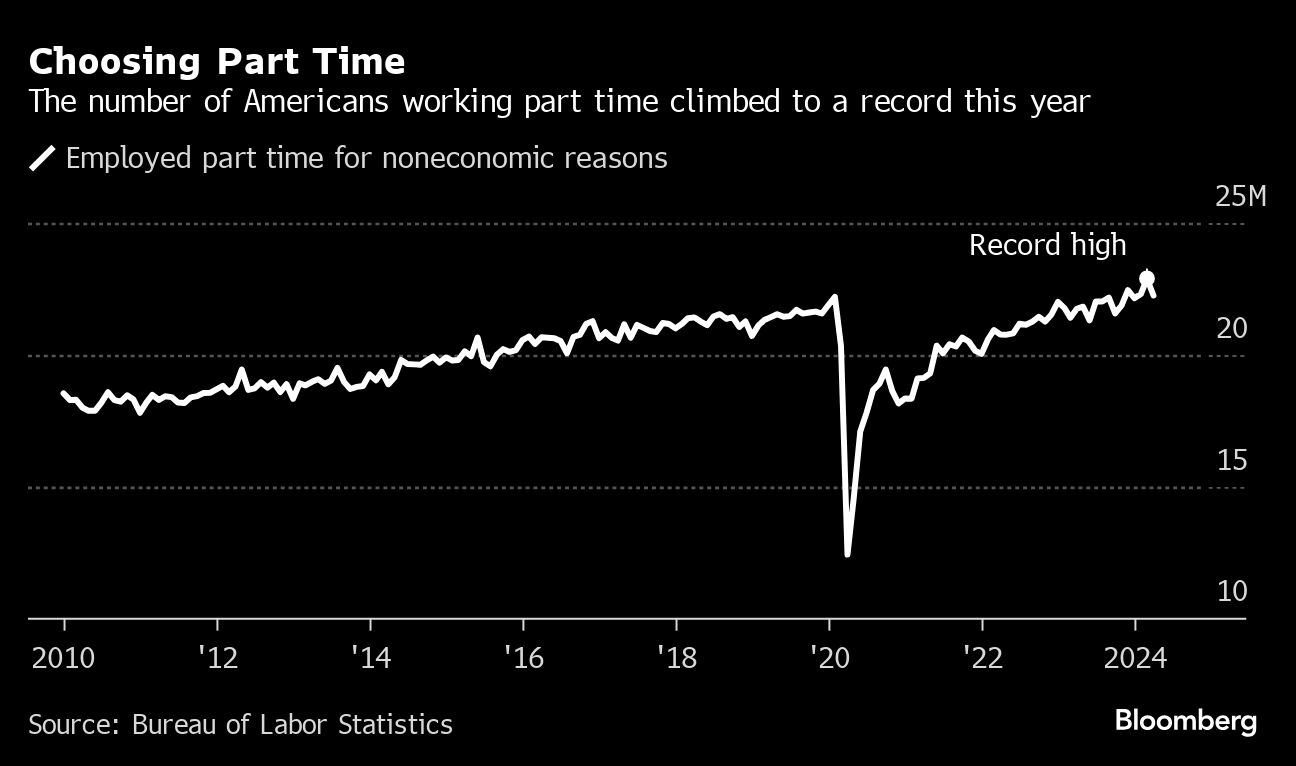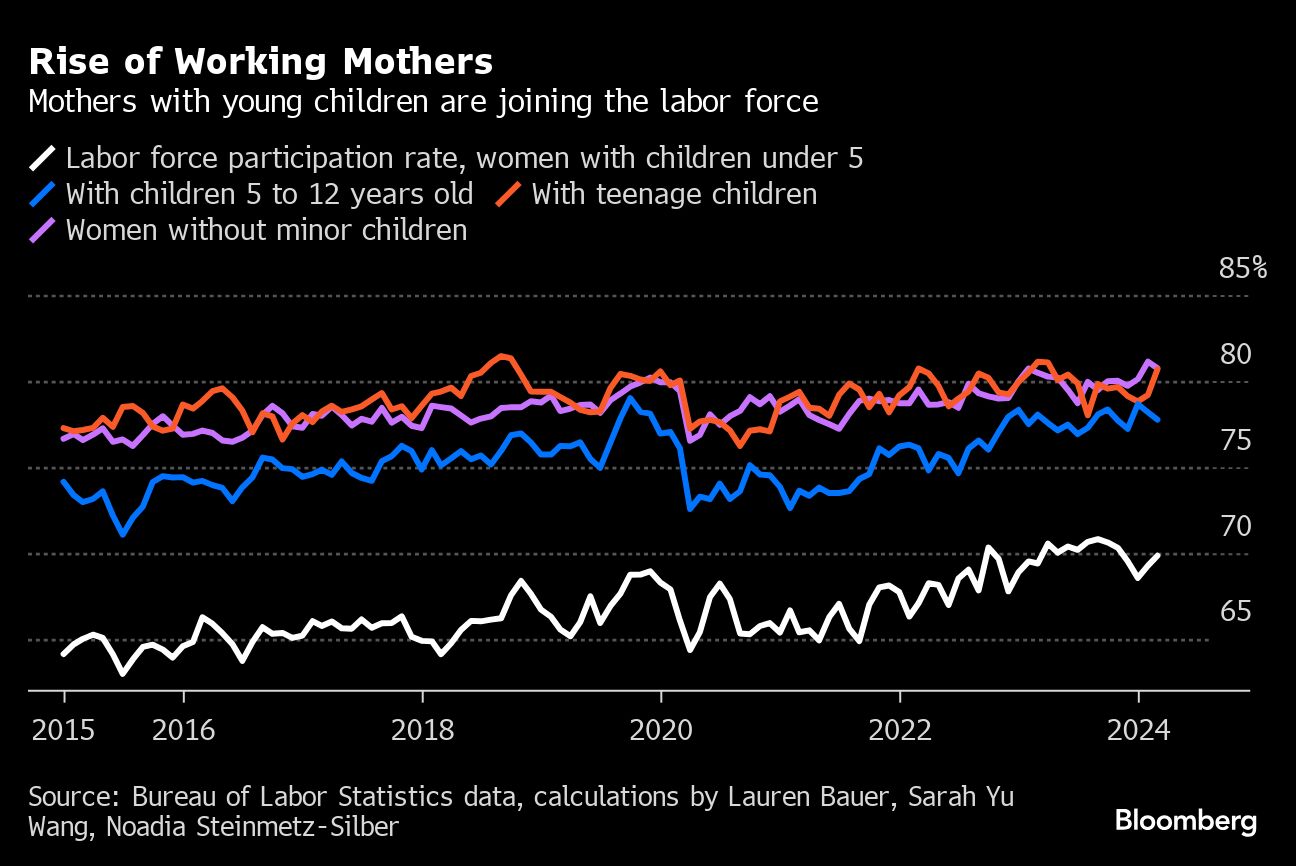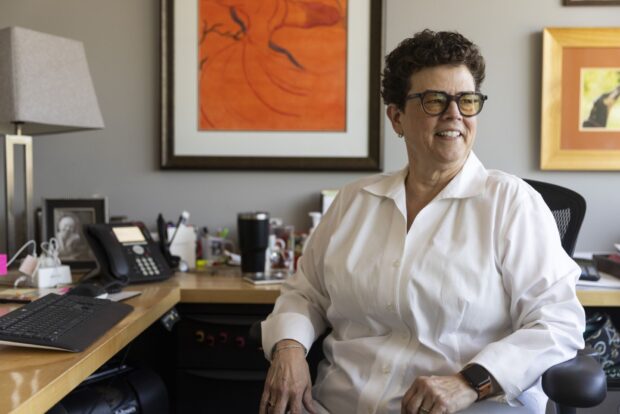The number of Americans voluntarily working part time hit a record high this year, thanks in part to women — particularly mothers — benefiting from the pandemic-driven rise in flexible work arrangements.
Many businesses eager to hire have accepted worker demands for part-time positions, along with other policies meant to give employees more control over their schedules. That’s helped bring more women into the labor force than ever before, with about a fifth of them working part time.

“The economy was firing on all cylinders and there were people that had left the labor force, and employers really had no choice but to be like, ‘Ok, what do you want? What do you need to come work?'” said Claudia Sahm, chief economist at New Century Advisors and a former Federal Reserve economist.
A record share of women ages 25-54 are now participating in the workforce, and the rate among women with a child under five surged to nearly 70 percent in March, according to an analysis by the Brookings Institution. That’s up from an average of 65.7 percent in the five years preceding the pandemic.
Much of the employment gain seen among women in that age group over the past year was in part-time positions, Sahm added.
While the lack of accessible and affordable child care remains a key barrier for mothers who want to work, the influx of women into the workforce is a promising sign for an economy poised to face decades of labor shortages. Women — alongside a wave of new immigrants — are helping plug the hole left by the millions of Americans retiring each year.
“We needed these women to get the labor shortage under control from COVID, but we need these women to keep the economy on a growth path for years and years,” Sahm said.
While many rich countries have long embraced part-time work and family leave, the pandemic marked an awakening for some U.S. business leaders that productive work doesn’t necessarily have to be full time or at the office. It also raised awareness about mothers’ responsibilities outside of the workplace.
“It’s a true silver lining here, that some of these assumptions have loosened up to the benefit of groups who have been demanding these kinds of flexibilities for a long time,” said Lauren Bauer, associate director of the Hamilton Project at the Brookings Institution.
But there may also be downsides to part-time work. In countries where part-time work is more common, women are more likely to participate in the labor force than in the U.S. — but are also much less likely to be in leadership positions, according to research by Francine Blau and Lawrence Kahn.
“Part-time work opportunities and also family leave are excellent at getting more women into the labor force, but they don’t necessarily have a positive effect on what the women in the labor force are doing,” said Blau, an economics professor at Cornell University. “They’re increasing employment but not necessarily gender equity in the labor force.”
Bus Stop Mamas
For Tracey Baubie, the president and chief executive officer of Comprehensive Research Group, which tests consumer products such as deodorants and diapers for manufacturers, part-time mothers are a key part of her team.
“If you’re an employer today and you’re not willing to have that flexibility, you’re missing out on a really, really talented labor pool,” Baubie said.
Baubie works with Bus Stop Mamas, a company founded in 2019 by Mary Kay Ziniewicz that aims to help stay-at-home mothers re-enter the workforce. Ziniewicz had the idea for the business standing with her daughter at the bus stop and noticing she was mostly surrounded by mothers with advanced degrees who had left the workforce to raise children.
Bus Stop Mamas now works with 25,000 mothers and over 800 companies like Baubie’s, where women can work part time with flexible hours — sometimes taking gaps during the day to handle other obligations.
The part-time work can also be a stepping stone toward a full-time position. Most of Baubie’s current full-time employees started out with a part-time schedule.
Some companies are finding that part-time and other flexible work arrangements can be a useful tool to tap when permanent employees are on leave or during uncertain economic times, according to the Mom Project, a group that aims to help keep women connected to the workforce.

Sarah Hart was a stay-at-home mother of four in Omaha, Neb., when she started looking for work after the pandemic. She wanted something very specific: only part-time work, no conferences or phone calls, and a dynamic work culture. She connected with the founder of Deux, a natural-ingredient snack startup, and started working eight to 10 hours each week from home, responding to customer questions.
Other startups quickly came knocking, so Hart launched a company of her own, named Louise. It connects women — for now mostly Hart’s friends — to companies looking for help on a part-time basis.
“A lot of them are just looking for something to call their own,” Hart said of the women. “It’s really fixing the need of their season of life, which is that window of time when their kids are in school.”
Top photo: Tracey Baubie; Photographer: Jaida Grey Eagle/Bloomberg





















 MAPFRE Accuses AAA of Violating Long-Time Exclusive Marketing Agreement
MAPFRE Accuses AAA of Violating Long-Time Exclusive Marketing Agreement  Insurance Costs, Climate Concerns Factor Heavily in U.S. Home Buying Decisions
Insurance Costs, Climate Concerns Factor Heavily in U.S. Home Buying Decisions  Why ‘Good Enough’ Is Killing Insurance: The Hidden Cost of Satisficing
Why ‘Good Enough’ Is Killing Insurance: The Hidden Cost of Satisficing  Federal Aviation Notice Warned of Slackline Before Deadly Arizona Helicopter Crash
Federal Aviation Notice Warned of Slackline Before Deadly Arizona Helicopter Crash 




